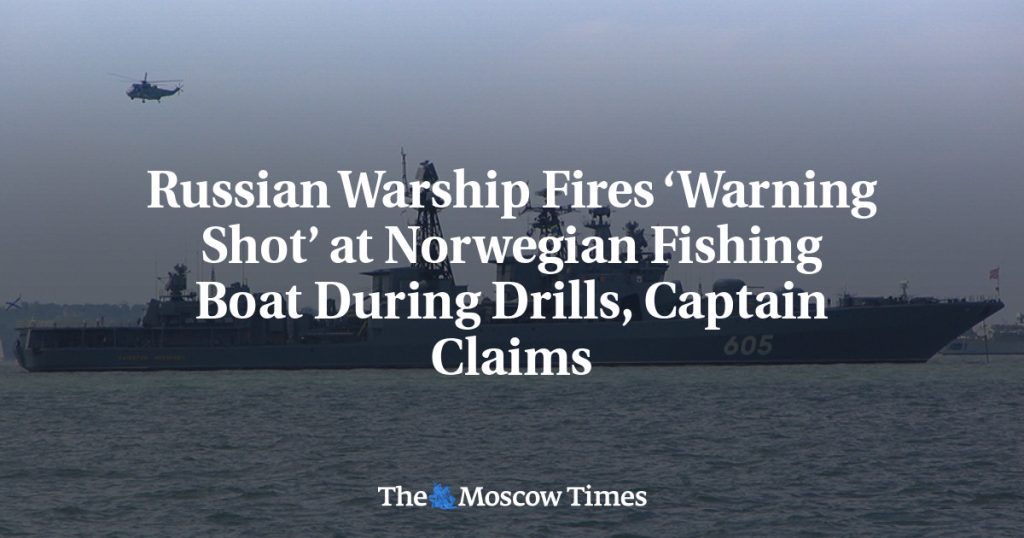A Norwegian fishing boat was fired at by a Russian warship during naval drills in the Barents Sea earlier in September. The fishing boat, Ragnhild Kristine, was within Norway’s exclusive economic zone, where the Russian Navy was conducting live-fire naval exercises as part of global drills. The captain of the fishing boat, Oystein Orten, stated that they were warned to leave the area by the Russian warship, but they refused as they needed to take onboard their longlines. The Admiral Levchenko, a large Russian warship, then approached the fishing boat, blowing its horn for 15 seconds before firing a warning shot that exploded in the water nearby. The incident caused the fishing boat to sail away with the Russian warship following until safety was reached.
Russian naval exercises in the Barents Sea have been a point of contention for Norwegian fishermen in recent years. The encounter between the Russian Navy and the fishing boat was confirmed by a Norwegian military spokesman, Lieutenant Colonel Vegard Finberg, who stated that there was no observation of a warning shot from their end. This discrepancy in accounts highlights the tensions that can arise during such situations at sea. The Norwegian military has been monitoring Russia’s naval activities in the region closely and has expressed concerns over the safety of Norwegian fishermen operating in these waters. The incident serves as a reminder of the complex geopolitical dynamics at play in the Arctic region, where competing interests often lead to confrontations like the one between the fishing boat and the Russian warship.
The Norwegian media has reported on the incident, shedding light on the challenges faced by Norwegian fishermen operating in the Arctic waters. The Admiral Levchenko, one of Russia’s largest warships, was involved in the warning shot fired at the fishing boat, raising questions about the Russian Navy’s conduct during naval exercises near Norwegian waters. The incident has prompted discussions about the need for greater transparency and communication between naval forces to prevent such confrontations in the future. As geopolitical tensions continue to rise in the Arctic, incidents like these serve as reminders of the risks associated with military activities in the region, especially for civilian vessels like fishing boats that operate in these waters.
The encounter between the Russian warship and the Norwegian fishing boat has further strained relations between the two countries, adding to existing tensions in the region. The Norwegian government has expressed concern over the incident and has called for dialogue with Russia to prevent future confrontations at sea. Norway’s exclusive economic zone is a crucial fishing ground for Norwegian fishermen, and any threats to their safety or disruption of their activities are taken seriously by the Norwegian authorities. The incident has raised questions about the need for better coordination and communication between neighboring countries in the Arctic to avoid similar incidents in the future and ensure the safety of all vessels operating in the region.
The Russian warship firing a warning shot at a Norwegian fishing boat highlights the risks associated with military activities in the Arctic region, where competing territorial claims and overlapping maritime boundaries often lead to confrontations between naval forces. The incident serves as a reminder of the need for better coordination and communication between countries operating in the Arctic to prevent misunderstandings and potential escalation of tensions. As the Arctic becomes increasingly important strategically and economically, incidents like these underscore the challenges faced by countries in balancing their national interests with the need to maintain peace and stability in the region. The incident has sparked discussions about the rules of engagement during naval exercises and the responsibilities of naval forces to ensure the safety of civilian vessels operating in these waters.


